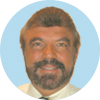Frankly I really do not like teaching the so called "advanced" program in acupuncture, because we get too far away from the real techniques which help most people.
With pain management, perhaps the most significant technique one can use, whether master or a rank neophyte, is simply to "surround the dragon." If the pain is in the elbow, one simply stimulates any and all areas which are sore on palpation. The same is true for virtually any pain regardless of location.
I cannot tell you how many thousands of doctors, following their first exposure to the techniques of acupuncture, who without fear and likewise without an appropriate background in traditional Chinese medicine, became incredibly effective in relieving, eliminating or lessening pain with this elementary technique. Unfortunately many of these individuals become intimidated by their lack of knowledge. Because they do not feel they really know what they are doing, they discontinue this most important of therapies in their offices, as they cannot explain it or because "this can't work, it's too easy."
Another "simply simple" technique which I have discussed in previous issues of Dynamic Chiropractic, is simple stimulation of any scar on the body regardless of how insignificant it may appear. Surgical scars should receive top consideration. This technique alone has been responsible for the turning around of countless lives. You say you can't explain why and how this procedure works? Unless you are a research scientist, don't worry about it. Just use this simple technique and help suffering humanity regain their health. By the time you get it figured out, you could have helped several hundred patients.
Perhaps one of the most significant techniques one can employ is also "simply simple": general stimulation of all 12 tsing points. Sometimes known as "jing well" points or "Akabane" points, these are the points on the fingertips and toetips, a grain of rice width from the corner of the nail where each meridian either begins or ends. These points have incredible curative effects when generally stimulated. This is a favorite technique of the highest masters in Asian healing. Should you come across any North Americans who tell you not to stimulate these points in general, do yourself a favor, ignore them.
What about the general stimulation of the "MU" and "SHU" points known to us "round eyes" (as my Chinese colleagues fondly and respectfully refer to us living outside of China) as the alarm and associated points? These points are the master "circuit breaker" points found on the trunk of the body both front and back. Any time there is an involvement of a meridian, one or more of these circuit breakers are going to trip. Simple palpation of these major points and general stimulation of any which are sore is a favorite technique of the highest masters of Asian healing.
But perhaps the most important of the "simply simple" techniques of acupuncture is the use of your "HERO" point. Now anyone knows who has ever taken my 50 hour accelerated certification program in acupuncture, my personal HERO point is GB 40. Now don't be using my HERO point, get your own. Everyone who has any involvement in acupuncture knows too well that we have a tendency to use one point more often than any other. This particular point is different with each practitioner. It is unique and individual. It normally does not have any particular academic significance. It is just a point practitioners feel comfortable with and find themselves using more often than any other. It is a very important point!
On my first visit to China in 1973, a young lady on the trip suddenly developed an excruciating migraine headache that did not respond to any of the adjustments, acupuncture, or the drugs she ultimately felt forced to ingest for some type of relief of the horrible pain.
Since I was a neophyte myself with just a few years of experience under my belt, I felt very intimidated by the condition and helpless. I saw everyone performing the things I knew, but they weren't working. As I sat across from her in the lobby of the hotel, I commented on the two large and obvious insect bites on her lower lateral ankle. On further examination, the bites were directly over the acupoints GB 37 and GB 38. Since one of the most "simply simple" rules of acupuncture is a meridian affects what it is named after or where it courses to, I wondered if the bites had anything to do with her intractable headache. Since the gallbladder meridian courses around the front, back and side of the head, and the bites were clearly on the gallbladder meridian, I selected the "YUAN" point known to us as the source point of the gallbladder meridian, reportedly four to six times more potent than any other point on the meridian. When I simply stimulated GB 40 with my teishein (nonpenetrating pressure device), the complete relief of her headache was instantaneous.
With the headache miraculously gone, she threw her arms around my neck exclaiming, "Dr. Amaro, you're my hero"! The GB 40 point became my HERO point and I use it with any and all conditions when I feel stuck or intimidated.
Remember the most important rule of this tip: Get your own point. Those of you with the imagination necessary to successfully conduct acupuncture will understand what I am saying. If you don't, be patient.
Without question the most important rule in healing is to K.I.S.S. it and make it well!
John A. Amaro, DC, FIACA, Dipl.Ac.
Carefree, Arizona
Click here for previous articles by John Amaro, LAc, DC, Dipl. Ac.(NCCAOM), Dipl.Med.Ac.(IAMA).





